*NURSING > QUESTIONS & ANSWERS > Freezing blue intrapartum NCLEX RN Maternity intrapartum Question Bank ( With all Answers 100% CORR (All)
Freezing blue intrapartum NCLEX RN Maternity intrapartum Question Bank ( With all Answers 100% CORRECT)
Document Content and Description Below
1. A nursing student is assigned to care for a client in labor. The nursing instructor asks the student to describe fetal circulation, specifically the ductus venosus. Which statement is correct re... garding the ductus venosus? 1. Connects the pulmonary artery to the aorta 2. Is an opening between the right and left atria 3. Connects the umbilical vein to the inferior vena cava 4. Connects the umbilical artery to the inferior vena cava 3. Connects the umbilical vein to the inferior vena cava 2. The nurse in a maternity unit is reviewing the clients' records. Which client would the nurse identify as being at the most risk for developing disseminated intravascular coagulation? 1. A primigravida with mild preeclampsia 2. A primigravida who delivered a 10-lb infant 3 hours ago 3. A gravida II who has just been diagnosed with dead fetus syndrome 4. A gravida IV who delivered 8 hours ago and has lost 500 mL of blood 3. A gravida II who has just been diagnosed with dead fetus syndrome 3. The nurse is caring for a client in labor. Which assessment finding indicates to the nurse that the client is beginning the second stage of labor? 1. The contractions are regular. 2. The membranes have ruptured.3. The cervix is dilated completely. 4. The client begins to expel clear vaginal fluid. 3. The cervix is dilated completely. 4. The nurse in the labor room is caring for a client in the active stage of the first phase of labor. The nurse is assessing the fetal patterns and notes a late deceleration on the monitor strip. What is the most appropriate nursing action? 1. Administer oxygen via face mask. 2. Place the mother in a supine position. 3. Increase the rate of the oxytocin (Pitocin) intravenous infusion. 4. Document the findings and continue to monitor the fetal patterns. 1. Administer oxygen via face mask. 5. The nurse is performing an assessment of a client who is scheduled for a cesarean delivery. Which assessment finding would indicate the need to contact the health care provider? 1. Hemoglobin of 11 g/dL 2. Fetal heart rate of 180 beats/minute 3. Maternal pulse rate of 85 beats/minute 4. White blood cell count of 12,000 cells/mm3 2. Fetal heart rate of 180 beats/minute 6. The nurse is reviewing the record of a client in the labor room and notes that the health care provider has documented that the fetal presenting part is at the –1 station. This documented finding indicates that the fetalpresenting part is located at which area? 1. 1 inch below the coccyx 2. 1 inch below the iliac crest 3. 1 cm above the ischial spine 4. 1 fingerbreadth below the symphysis pubis 3. 1 cm above the ischial spine 7. A client arrives at a birthing center in active labor. Her membranes are still intact, and the health care provider prepares to perform an amniotomy. What will the nurse relay to the client as the most likely outcome of the amniotomy? 1. Less pressure on her cervix 2. Decreased number of contractions 3. Increased efficiency of contractions 4. The need for increased maternal blood pressure monitoring 3. Increased efficiency of contractions 8. The nurse is monitoring a client in labor. The nurse suspects umbilical cord compression if which is noted on the external monitor tracing during a contraction? 1. Variability 2. Accelerations 3. Early decelerations 4. Variable decelerations 4. Variable decelerations 9. A client in labor is transported to the delivery room and prepared for a cesarean delivery. After the client is transferred to the delivery room table, the nurse shouldplace the client in which position? 1. Supine position with a wedge under the right hip 2. Trendelenburg's position with the legs in stirrups 3. Prone position with the legs separated and elevated 4. Semi-Fowler's position with a pillow under the knees 1. Supine position with a wedge under the right hip 10. The nurse is monitoring a client in active labor and notes that the client is having contractions every 3 minutes that last 45 seconds. The nurse notes that the fetal heart rate between contractions is 100 beats/minute. Which nursing action is most appropriate? 1. Notify the health care provider (HCP). 2. Continue monitoring the fetal heart rate. 3. Encourage the client to continue pushing with each contraction. 4. Instruct the client's coach to continue to encourage breathing techniques. 1. Notify the health care provider (HCP). 11. The nurse is caring for a client in labor and is monitoring the fetal heart rate patterns. The nurse notes the presence of episodic accelerations on the electronic fetal monitor tracing. Which action is most appropriate? 1. Notify the health care provider of the findings. 2. Reposition the mother and check the monitor for changes in the fetal tracing. 3. Take the mother's vital signs and tell the mother that bed rest is required to conserve oxygen. 4. Document the findings and tell the mother that the pattern on the monitor indicates fetal well-being.4. Document the findings and tell the mother that the pattern on the monitor indicates fetal well-being. 12. The nurse is admitting a pregnant client to the labor room and attaches an external electronic fetal monitor to the client's abdomen. After attachment of the electronic fetal monitor, what is the next nursing action? 1. Identify the types of accelerations. 2. Assess the baseline fetal heart rate. 3. Determine the intensity of the contractions. 4. Determine the frequency of the contractions. 2. Assess the baseline fetal heart rate. 13. The nurse is reviewing true and false labor signs with a multiparous client. The nurse determines that the client understands the signs of true labor if she makes which statement? 1. "I won't be in labor until my baby drops." 2. "My contractions will be felt in my abdominal area." 3. "My contractions will not be as painful if I walk around." 4. "My contractions will increase in duration and intensity." 4. "My contractions will increase in duration and intensity." 14. Which assessment finding following an amniotomy should be conducted first? 1. Cervical dilation 2. Bladder distention 3. Fetal heart rate pattern 4. Maternal blood pressure 3. Fetal heart rate pattern15. The nurse has been working with a laboring client and notes that she has been pushing effectively for 1 hour. What is the client's primary physiological need at this time? 1. Ambulation 2. Rest between contractions 3. Change positions frequently 4. Consume oral food and fluids 2. Rest between contractions 16. The nurse is assisting a client undergoing induction of labor at 41 weeks' gestation. The client's contractions are moderate and occurring every 2 to 3 minutes, with a duration of 60 seconds. An internal fetal heart rate monitor is in place. The baseline fetal heart rate has been 120 to 122 beats/minute for the past hour. What is the priority nursing action? 1. Notify the health care provider. 2. Discontinue the infusion of oxytocin (Pitocin). 3. Place oxygen on at 8 to 10 L/minute via face mask. 4. Contact the client's primary support person(s) if not currently present. 2. Discontinue the infusion of oxytocin (Pitocin). 17. The nurse is assessing a pregnant client in the second trimester of pregnancy who was admitted to the maternity unit with a suspected diagnosis of abruptio placentae. Which assessment finding should the nurse expect to note if this condition is present? 1. Soft abdomen 2. Uterine tenderness3. Absence of abdominal pain 4. Painless, bright red vaginal bleeding 2. Uterine tenderness 18. The maternity nurse is preparing for the admission of a client in the third trimester of pregnancy who is experiencing vaginal bleeding and has a suspected diagnosis of placenta previa. The nurse reviews the health care provider's prescriptions and should question which prescription? 1. Prepare the client for an ultrasound. 2. Obtain equipment for a manual pelvic examination. 3. Prepare to draw a hemoglobin and hematocrit blood sample. 4. Obtain equipment for external electronic fetal heart rate monitoring. 2. Obtain equipment for a manual pelvic examination. 19. An ultrasound is performed on a client at term gestation who is experiencing moderate vaginal bleeding. The results of the ultrasound indicate that abruptio placentae is present. On the basis of these findings, the nurse should prepare the client for which anticipated prescription? 1. Delivery of the fetus 2. Strict monitoring of intake and output 3. Complete bed rest for the remainder of the pregnancy 4. The need for weekly monitoring of coagulation studies until the time of delivery 1. Delivery of the fetus20. The nurse is monitoring a client who is in the active stage of labor. The client has been experiencing contractions that are short, irregular, and weak. The nurse documents that the client is experiencing which type of labor dystocia? 1. Hypotonic 2. Precipitous 3. Hypertonic 4. Preterm labor [Show More]
Last updated: 1 year ago
Preview 1 out of 35 pages
.png)
Reviews( 0 )
Document information
Connected school, study & course
About the document
Uploaded On
Sep 12, 2021
Number of pages
35
Written in
Additional information
This document has been written for:
Uploaded
Sep 12, 2021
Downloads
0
Views
84

.png)
.png)
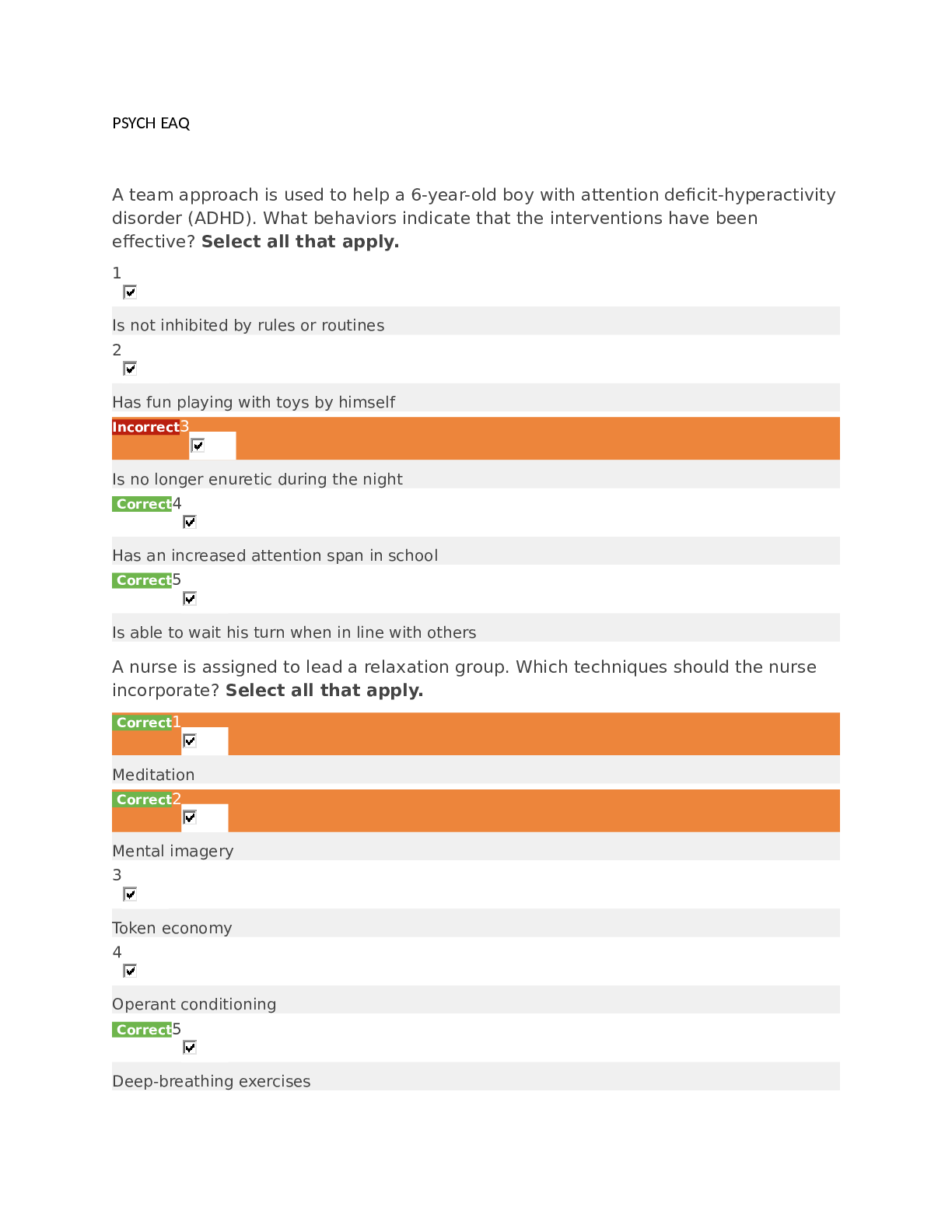
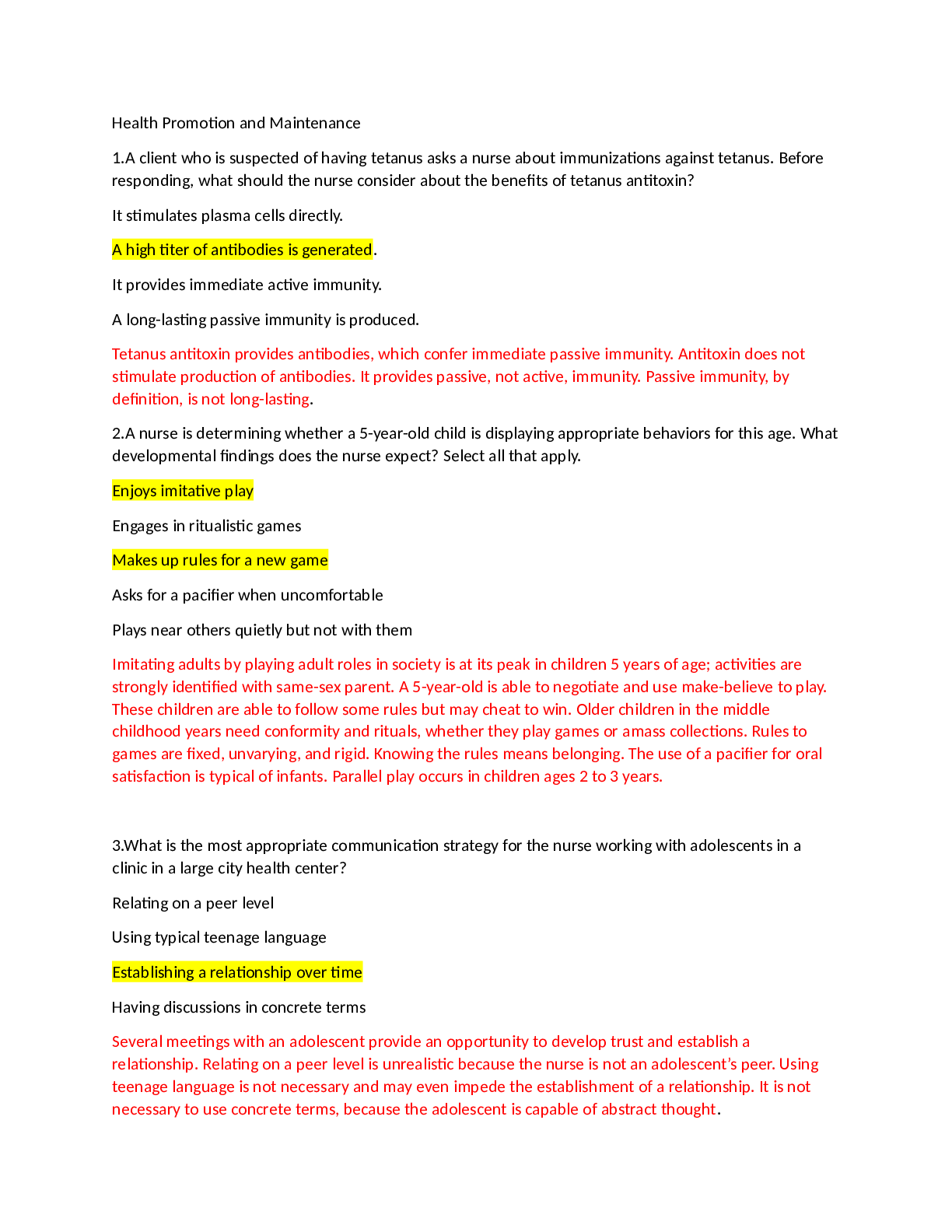
.png)
.png)
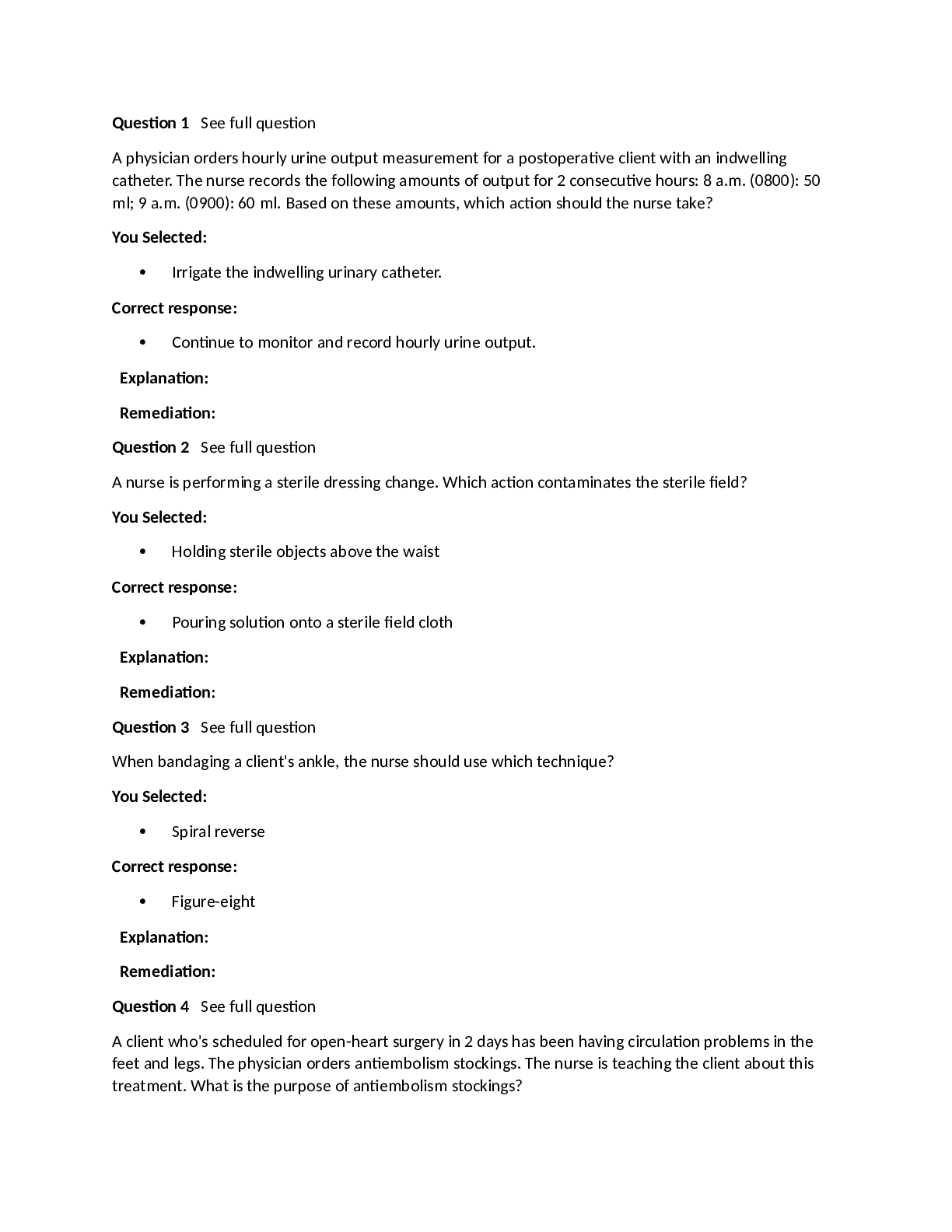
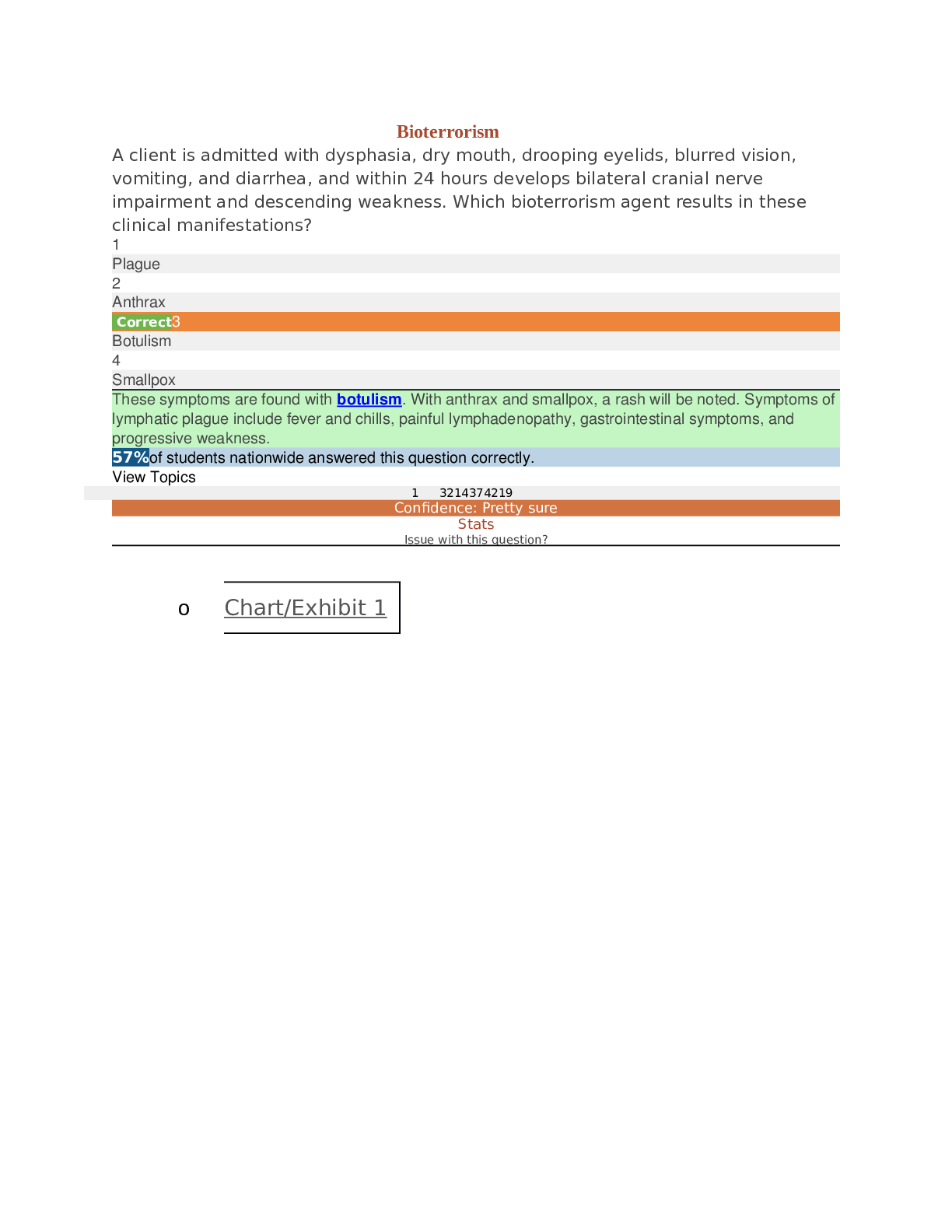
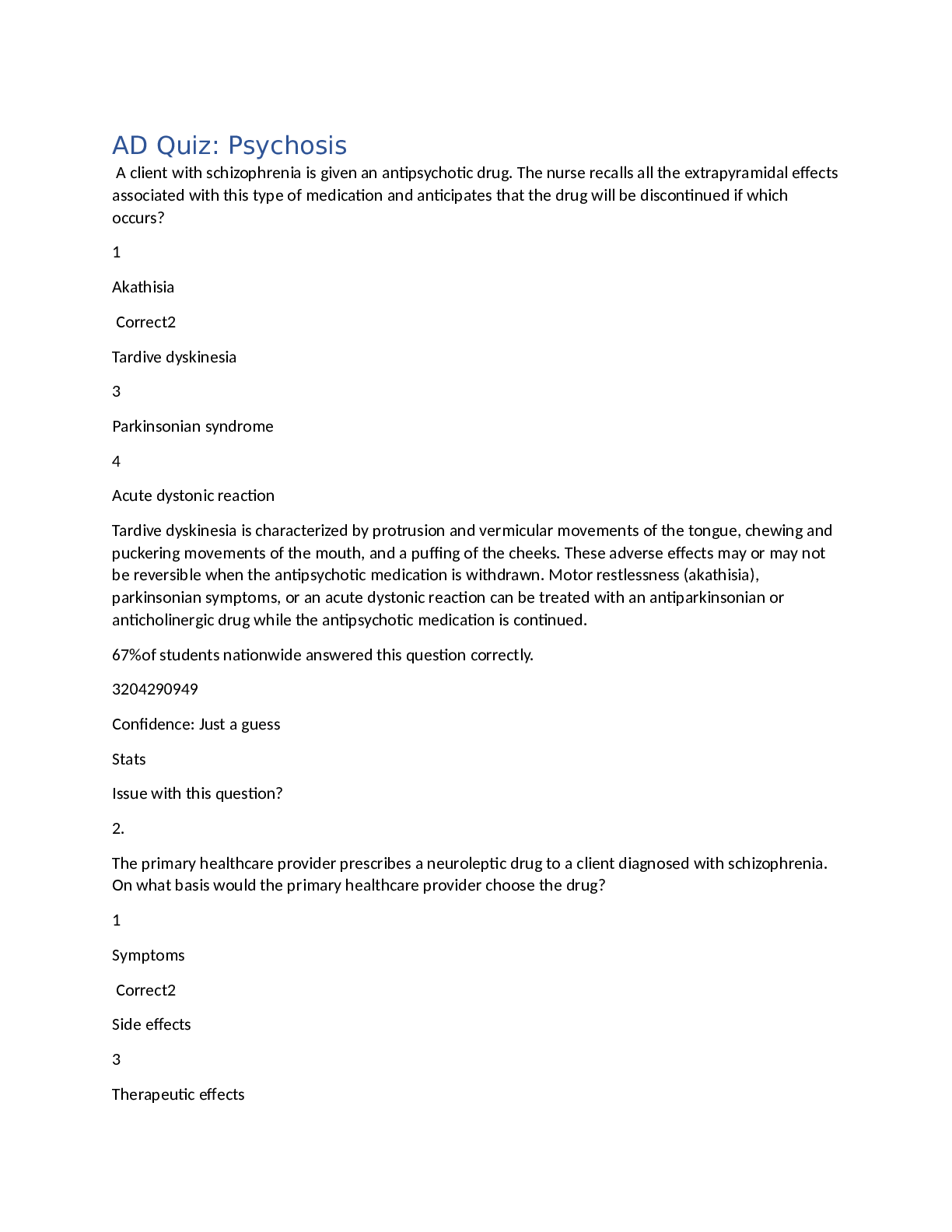

.png)
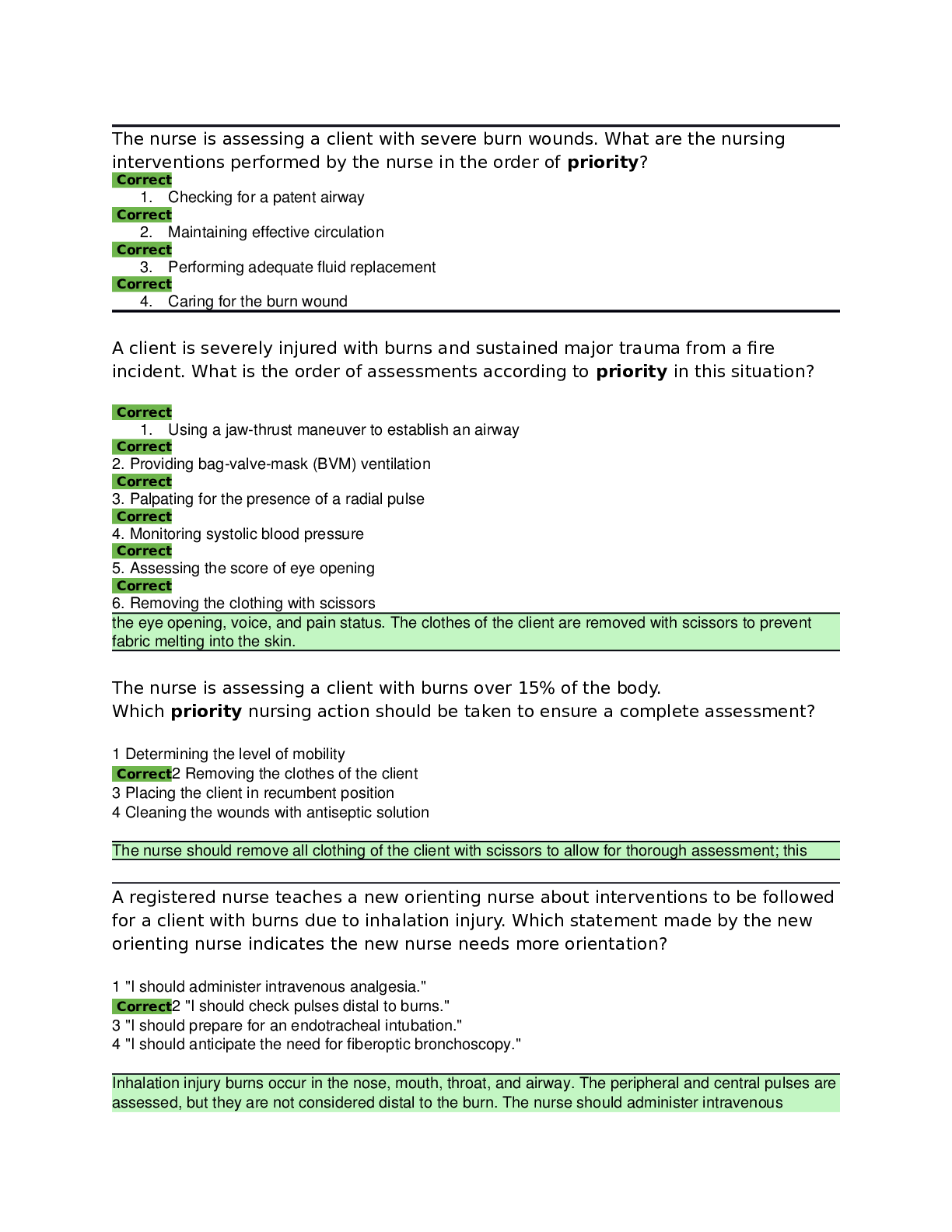
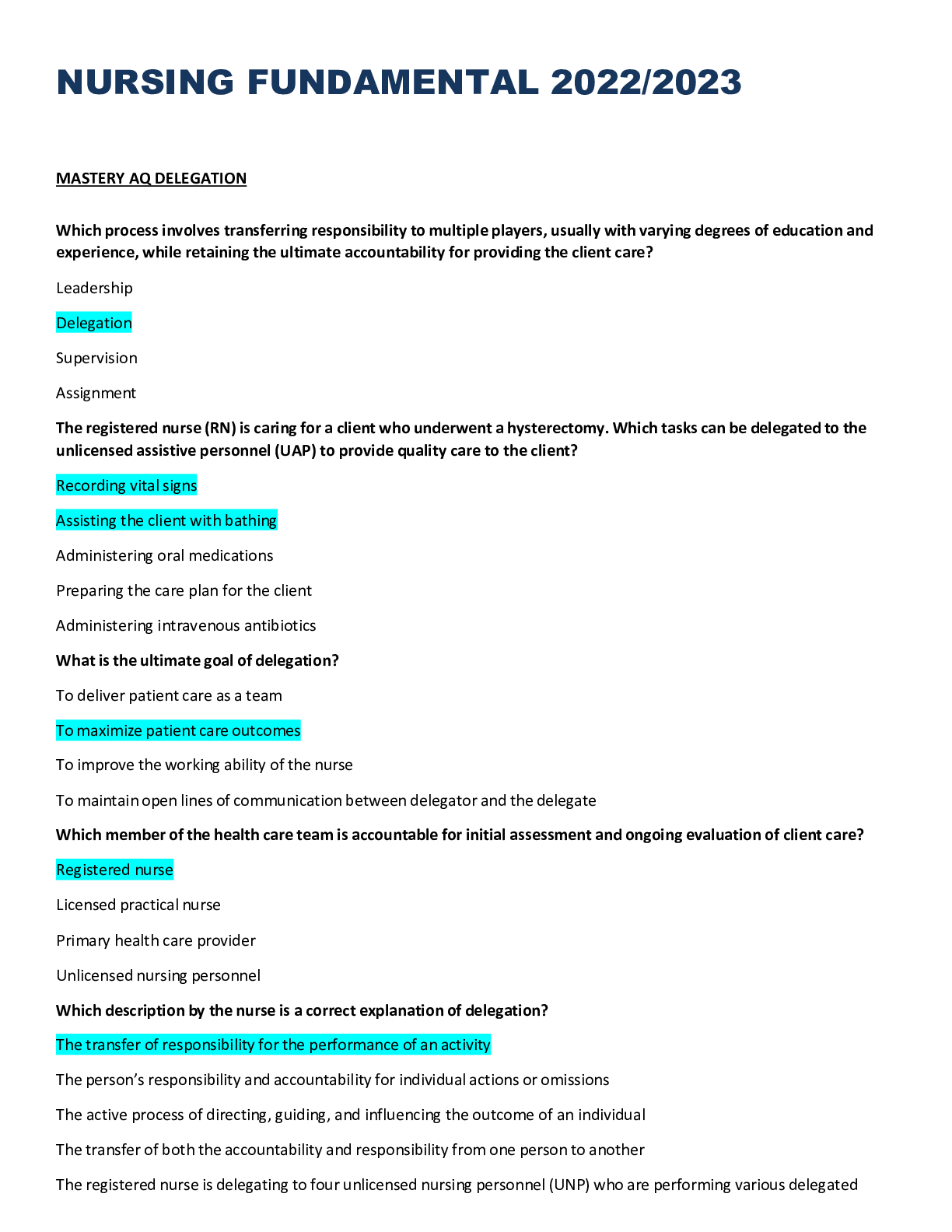

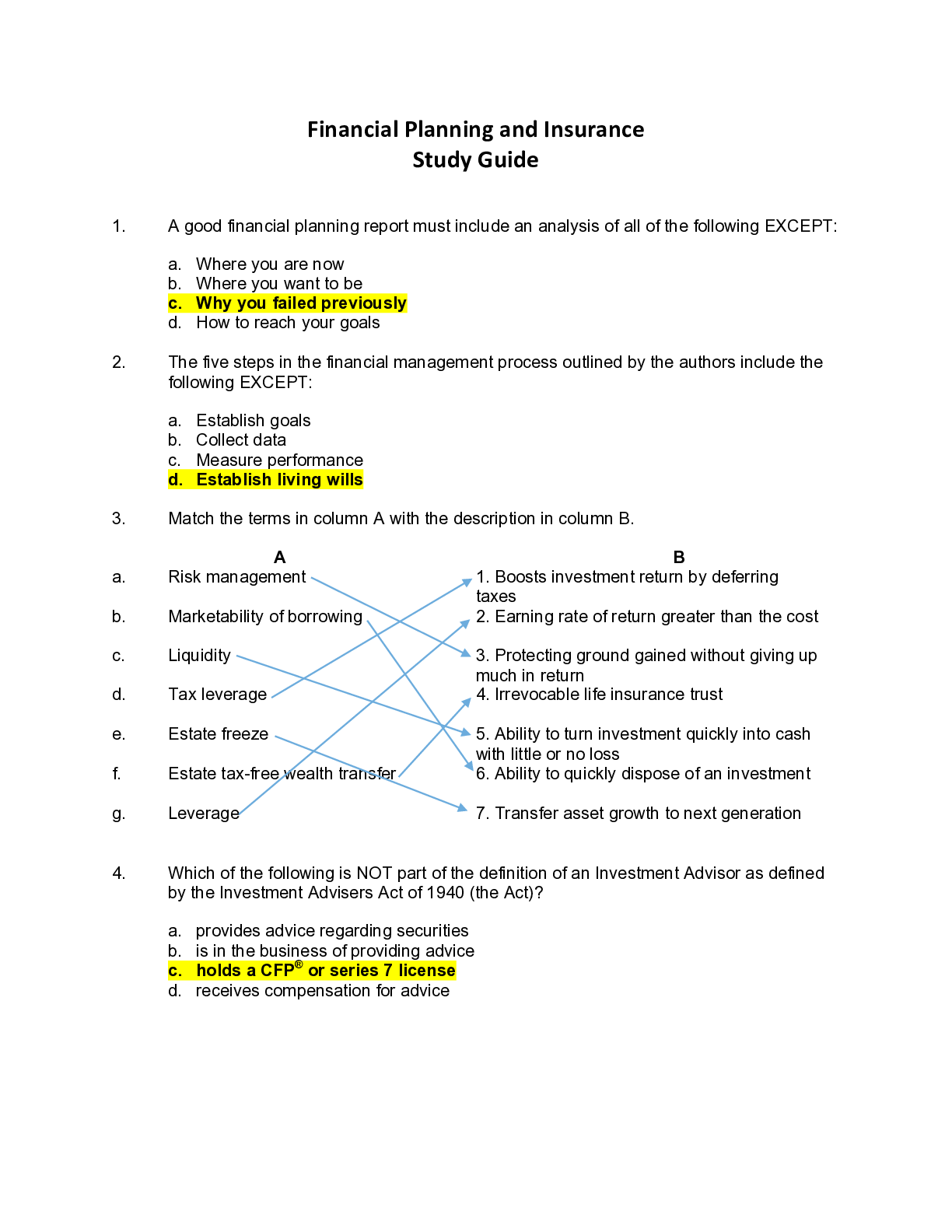

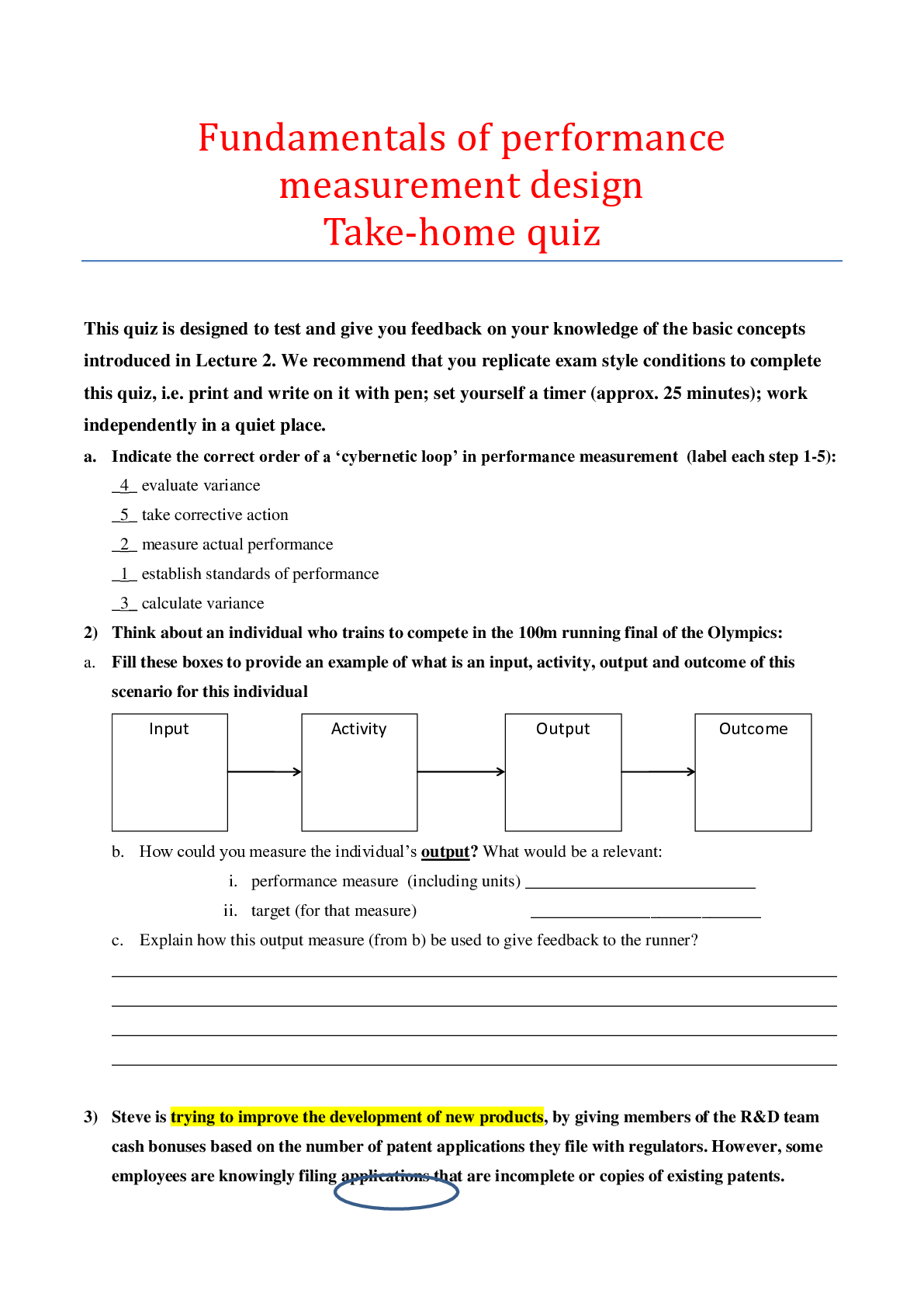
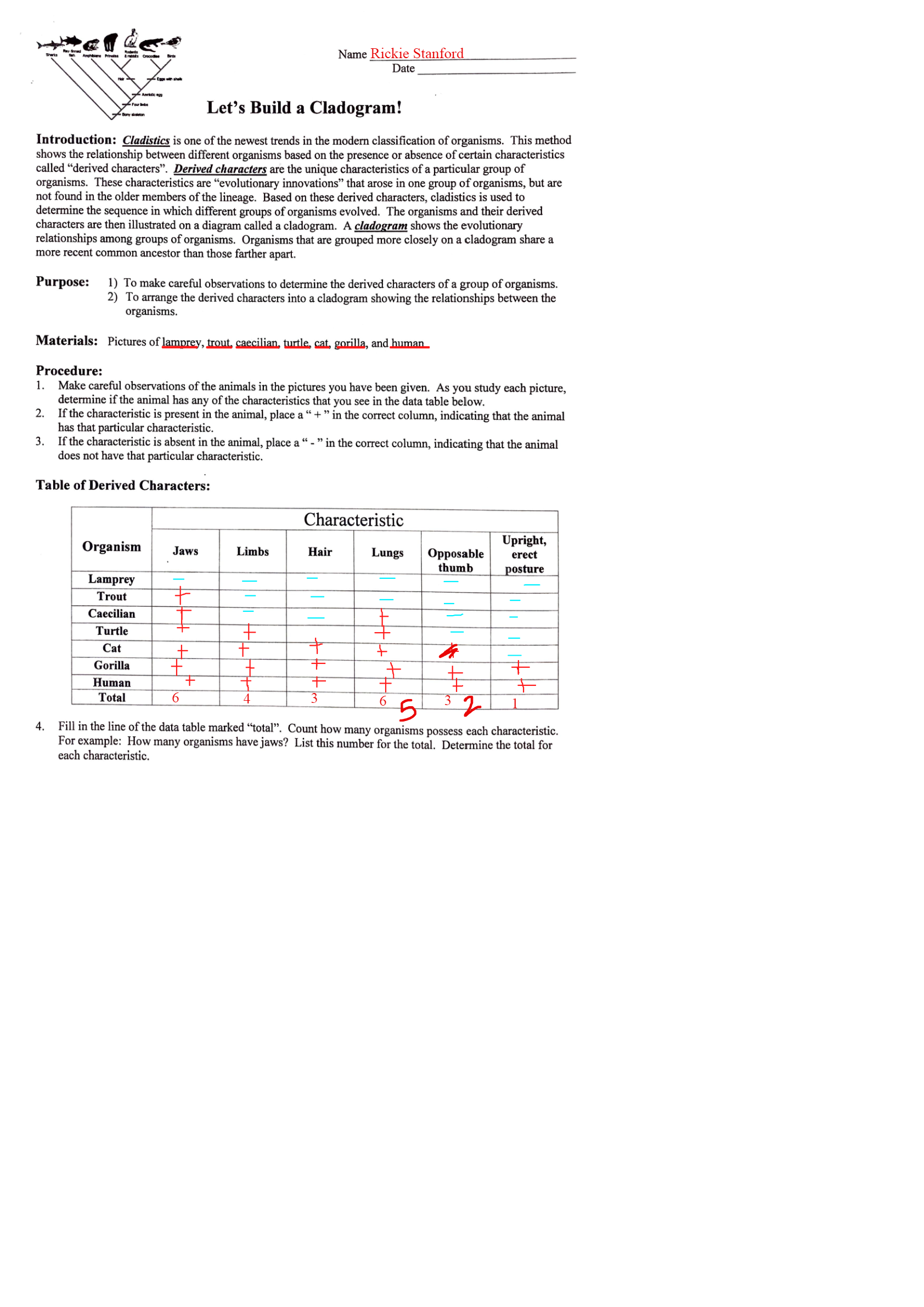
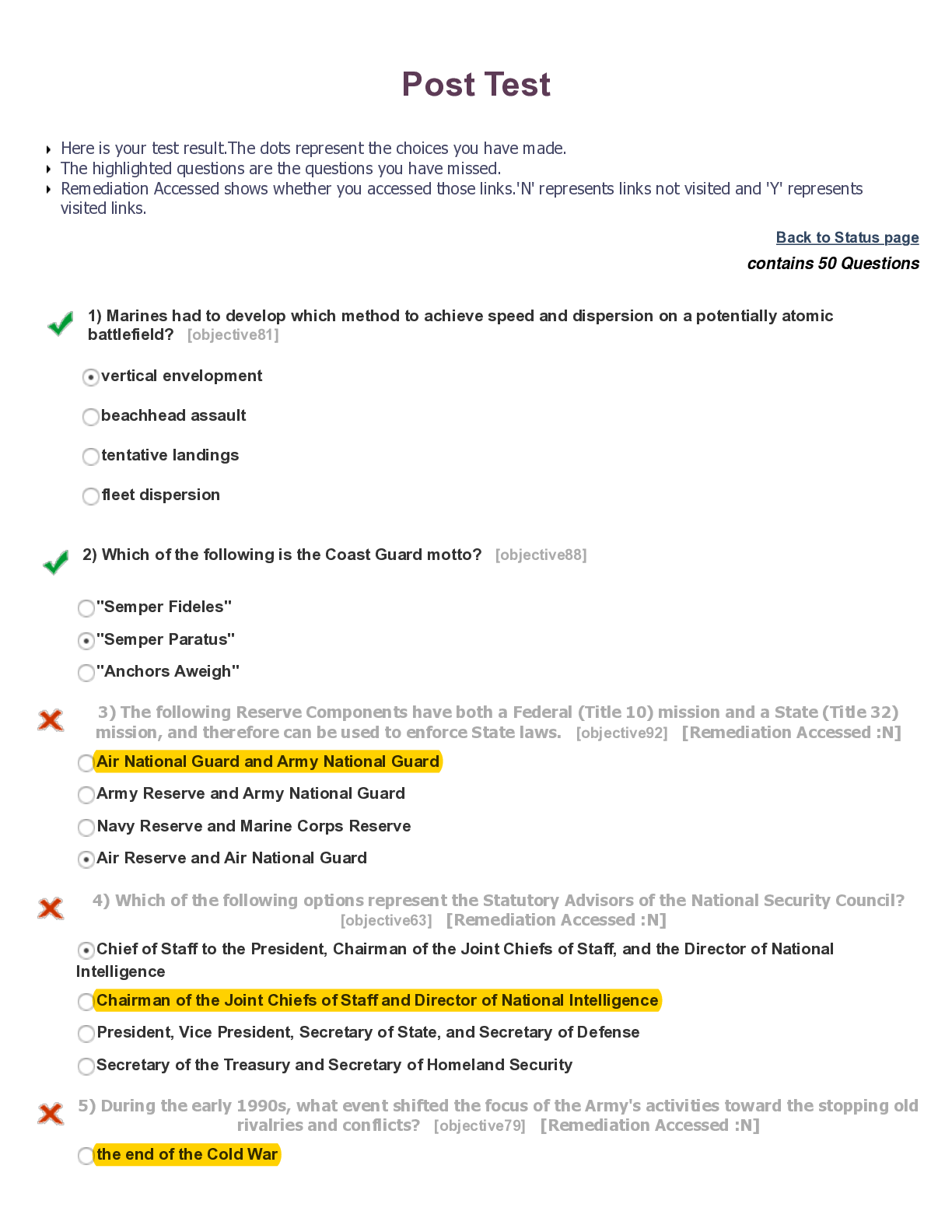
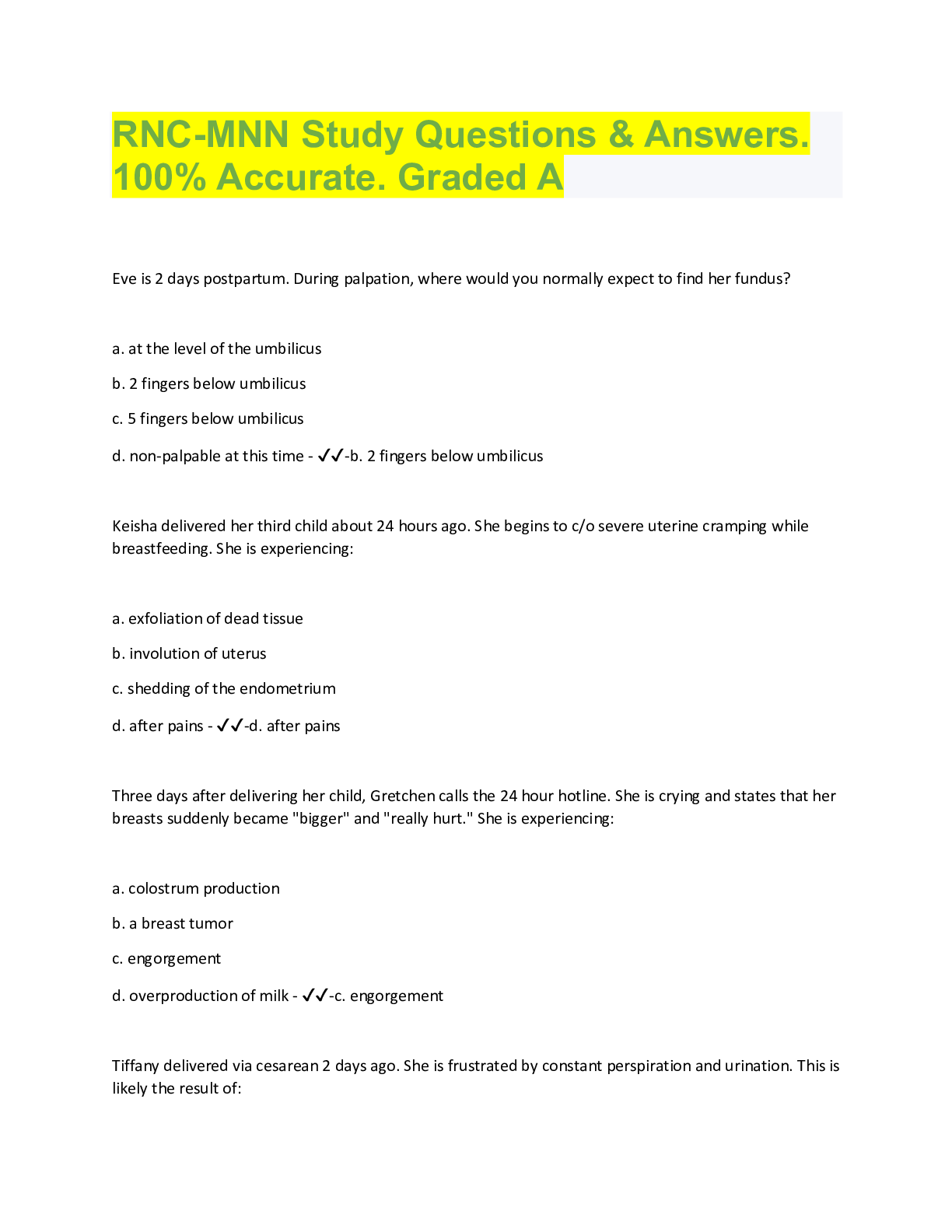


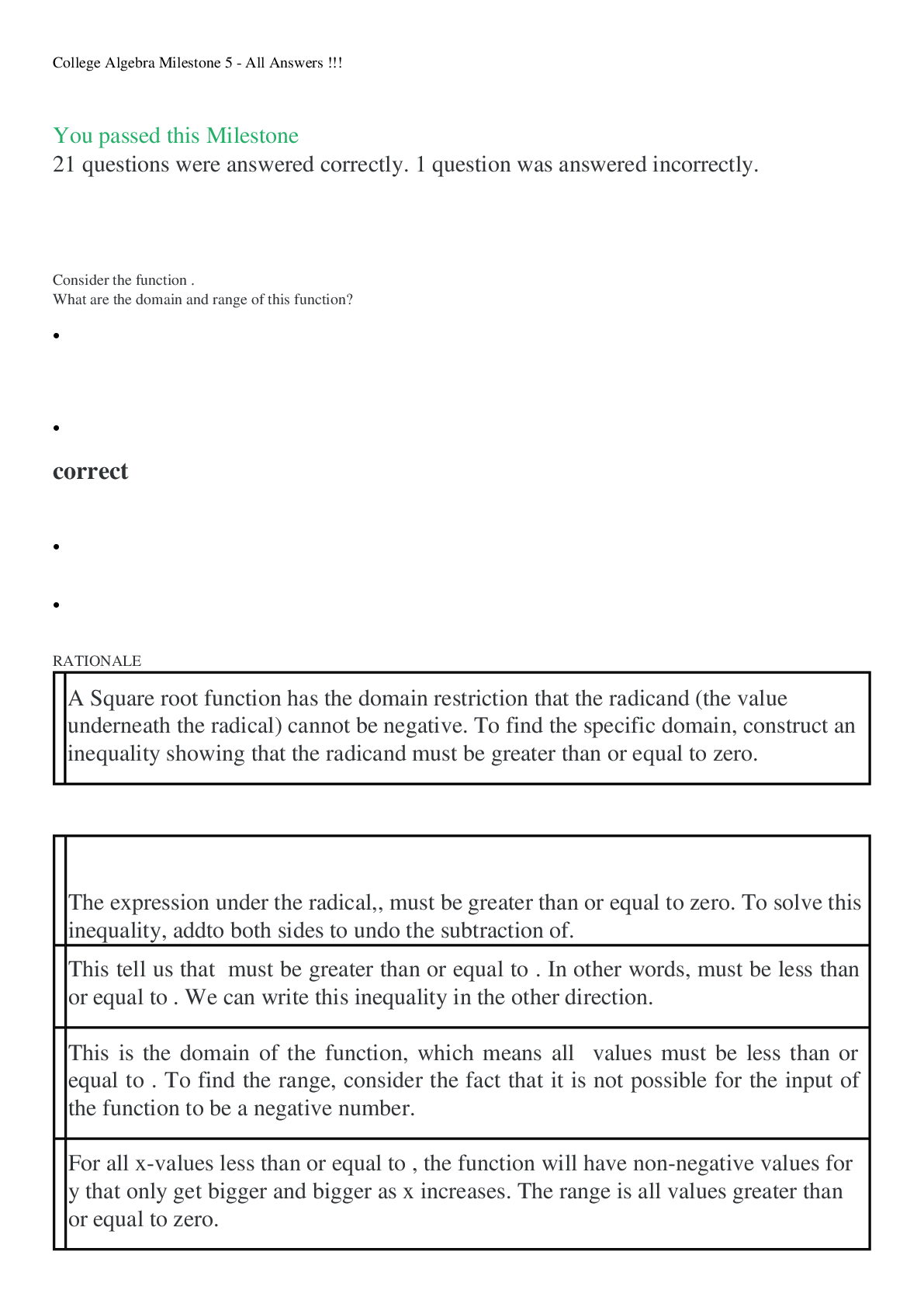
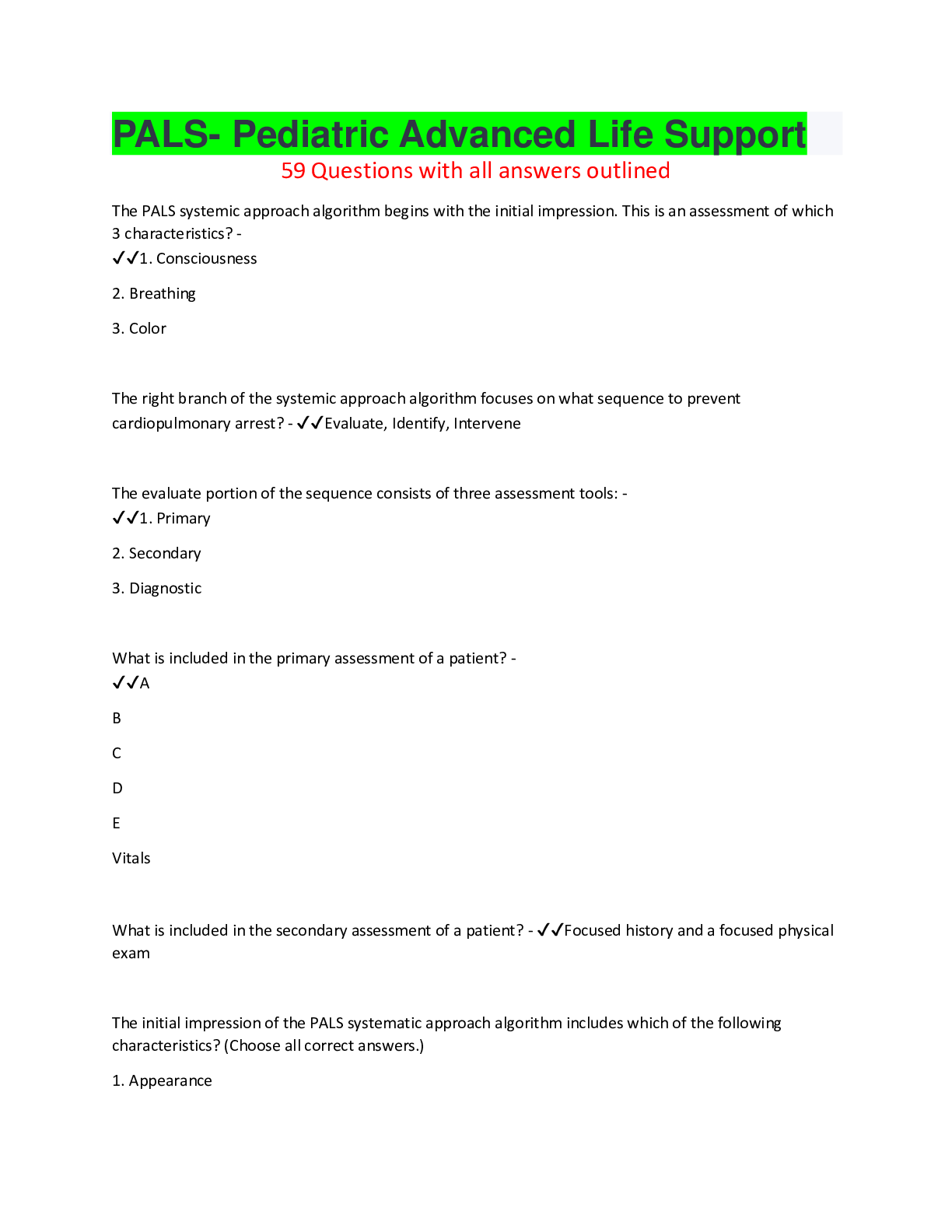


.png)
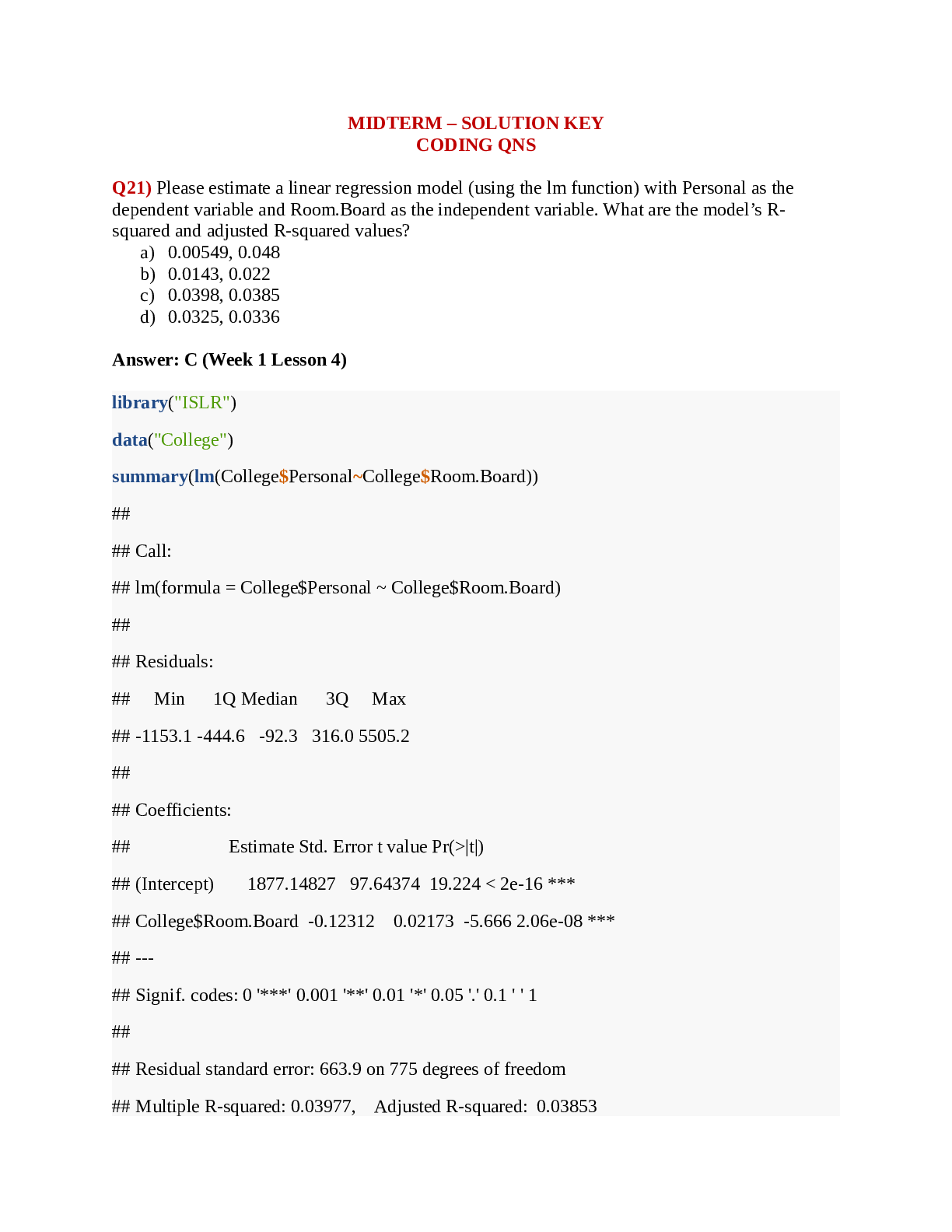
 Senior Enlisted Joint Professional Military Education All Correct Answers, GRADED A.png)

